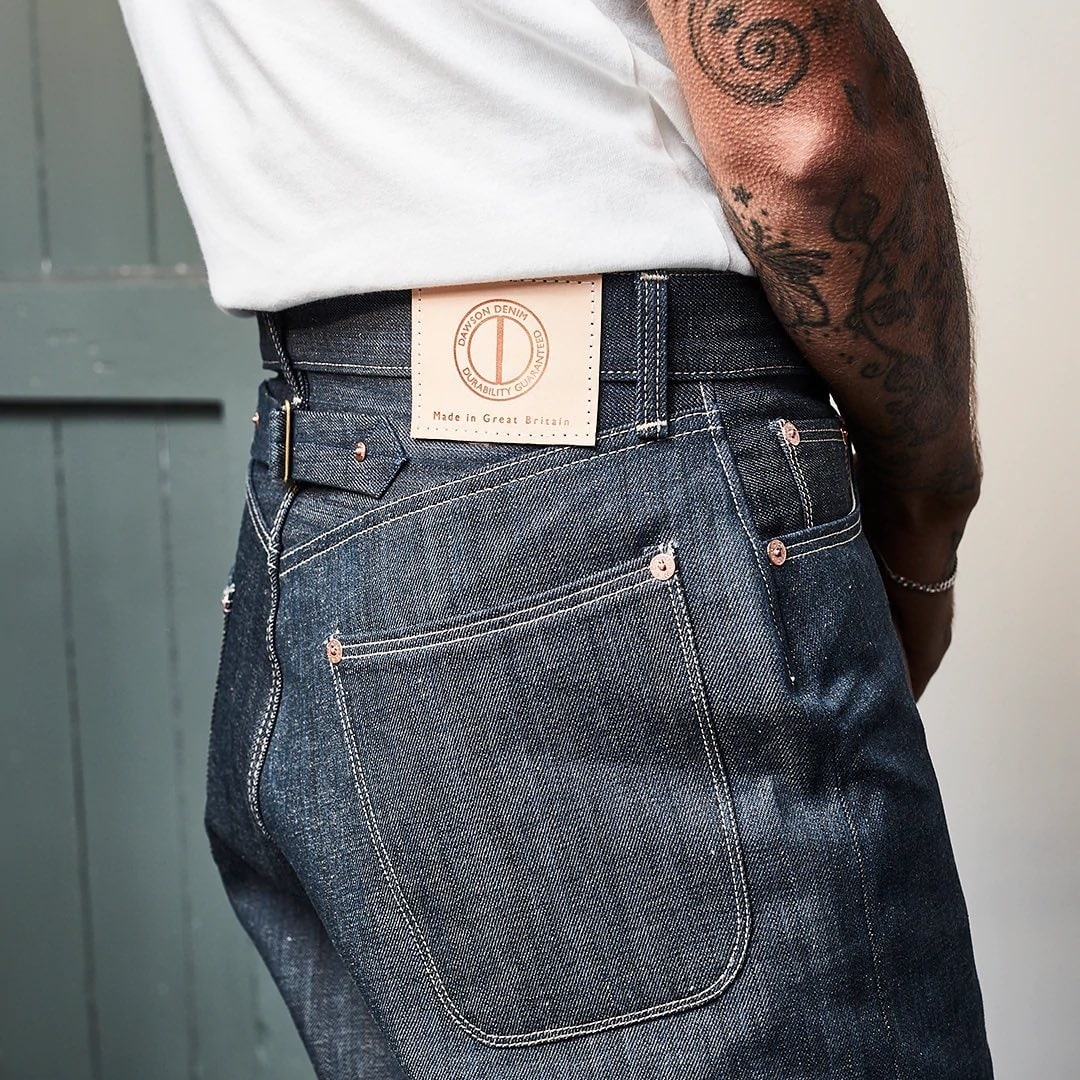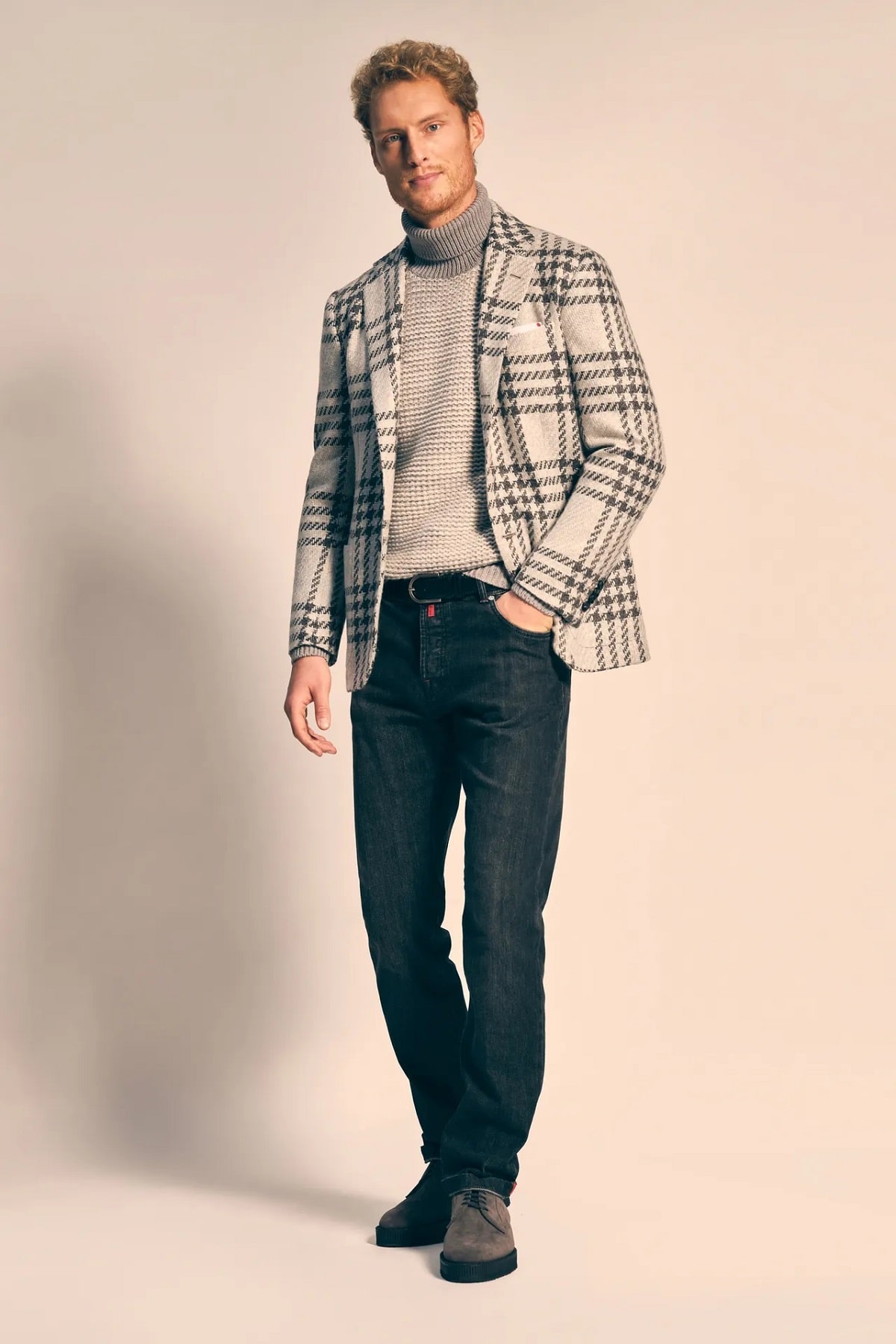1
HOME > Tips & Advice >
WHAT TO LOOK FOR IN A PAIR OF JEANS
Written by Ivan Yaskey in Tips & Advice on the 29th September 2022

Especially as you ascend into adulthood, you think you know what kinds of jeans work for your body or suit your preferences. Still, even with shifting trends, something always seems off – a leg that exposes too much ankle, a waist that requires you to suck in, or a silhouette that makes you look wider or boxier. The options out there don’t make your search any easier. Jeans have been part of wardrobes in some form for over a century – first for workwear, later through the military, and eventually for civilian use via mid-century youth culture. Back then, variation was minimal. Today, fits can seem overwhelming, and you have multiple material choices. To get a pair of jeans that lasts, evaluate the following:
Material
We’ve lived through bellbottoms, stonewash, acid wash, and rhinestone details. Despite all that and more, denim at its most basic is a cotton warp-faced twill woven on the diagonal. This results in indigo-dyed threads juxtaposed against a white weft, creating a very subtly dithered appearance. In spite of all Levi Strauss & Co.’s heritage talk, denim supposedly originated at some point in the 16th century – in Genoa, Italy or Nimes, France – with a coarse, heavier construction more akin to modern-day corduroy. As you can predict, the thickness and durability were ideal for a coverall-type garment. Going into the 19th and eventually the 20th centuries, denim found its footing as a heavier 100-percent cotton material that the wearer had to break in.

Despite this, it offered the right mix, at the time, of comfort, strength, and ability to withstand nearly anything thrown its way. Starting in the 1990s, however, jeans, at least in the more casual sense, underwent some structural changes. Excluding the tapered to pipe and wide-leg shift that occurred over that decade, yarns began to include a core of spandex or polyester added for stretch and flexibility. This resulted in a greater degree of comfort, shorter break-in time, a slightly lighter weight and softer handfeel, and better responsiveness to ripping and fading treatments. Today, you’ll spot denim with a barely noticeable amount of spandex to jeggings and spray-on jeans that can stretch as much as 40 percent of their initial size. For purists and anyone looking to maintain their wardrobe, this composition has turned into an issue: sagging and puckering develop, jeans start to look and feel more like chinos, and, more importantly, they just don’t last as long. Beyond 100% cotton and cotton blend, you have a few more material choices to consider:
- Selvedge denim: Despite the heritage-y name, “selvedge” simply means the denim has a finished hem and is less likely to unravel. Although either composition can be selvedge, you’re more likely to see this term used for Japanese loom-woven denim.
- Raw denim: Also called “dry” denim, this material hasn’t been pre-washed, isn’t treated, and requires more breaking-in time. Despite its initial stiffer feel, raw denim starts to develop a unique patina and individualized feel with time.
Then, there’s fabric weight. Traditionally, jeans have been made of eight- to 20-ounce denim: Anything under 12 oz. is considered lighter-weight, while anything above 14 oz. tends to be classified as a heavier-weight material. Realize that material can affect size. Traditional 100% cotton and raw denim require at least 10, if not more, wears to fully conform to your body. In some cases, the material may stretch a full size. Something with more spandex and polyester, however, is already built to stretch, and should be sized without anticipating this change.

Wash
Although some might say this falls into the material category, wash can transform the look of a pair of jeans – and when and how you’ll wear them. Mid-wash is your standard pre-washed, moderately treated material – you can see more of the white in the fabric. Light wash removes more of the indigo, appears more faded, and hence is ready for more casual settings. In the opposite direction, dark wash, as well as black jeans, are a cornerstone of smart-casual wardrobes. Treatments beyond this point – think fading, whiskering, rips and tears, and acid wash – are purely for fashion and frequently have a timestamp written on them.
Fit
Fit perplexes consumers the most when it comes to shopping for a pair of jeans. For one, naming and labeling often vary on a brand-by-brand basis: What’s “classic” for one will be “straight” or “regular” for another. Then, “tapered” is increasingly a descriptor for a number of sizes. For a basic rundown, fits for men’s jeans include:
- Regular: Also known as classic or straight, this is the most middle-of-the-road fit out there. Despite that, regular-fit jeans flatter a larger variety of body types. These have a straight fit from the hips to the ankle and a mid-rise. “Regular tapered,” by contrast, will slightly narrow the leg opening from the knee to the ankle.
- Slim: This fit occupies the space between “regular” and “skinny” and also comes in straight and tapered varieties. Basically, these jeans have some shape but aren’t skin tight.
- Skinny: This has been the dominant young men’s silhouette since the early 2010s, and includes both super-skinny and spray-on fits. Fabricated with more spandex than other fits, skinny jeans sit close to the skin with minimal room, flex more, and can have a mid to low rise.
- Bootcut: These are your retro, often ‘70s-esque cowboy jeans. They’re straight yet slim and tend to have a mid to high rise.
- Relaxed: This is a straight regular jean with a bit more room all around. As a note, “relaxed tapered” tends to be branded as “athletic jeans,” as they accommodate and show off more of a muscular build.
- Loose: Whether cropped or dragging on the floor like JNCOs, this is the roomiest fit you’ll find. These jeans fit around the waist – although the waist itself may bag – and sit far away from the skin in all directions.

Then, rise comes into play. Mid-rise is the most standard and classic, while high-rises or higher waists have been in style as of recent, often accompanied by pleats but not always. Rise, for reference, is the space from where the crotch begins – look for the seam intersection – to the waistband. “Rise,” if you check sizing, will include front and back figures. Generally, high-rise hits right at the natural waist, and mid-rise sits just above your hips. Low-rise – a Y2K throwback that’s been gaining some visibility – sits on or below the tips. Although you’re recommended to try out some styles in stores in see what you prefer by fit and what flatters your body type, general recommendations include:
- Slimmer: A regular straight fit gives your body more structure. Skinny and baggy, by contrast, tend to exaggerate your proportions.
- Muscular and athletic: Skinny and slim-fit jeans tend to accentuate your more defined form, while straight and baggy camouflage it.
- Wider torso: Individuals with a wider, more angular torso tend to experience straining with skinny, slim, and even regular fits. A relaxed fit offers more room without calling attention to your hip area.
- Shorter height: A regular or slim fit, preferably with a mid-rise, can have more of a lengthening effect.
- Taller heights: If you’re 6 ft. or above, avoid high-rise waists and excessive bagging around the ankles, as these factors can distort your height. Instead, a slim or regular fit – straight or tapered and with a mid-rise – creates more defined proportions.

Sizing
Many confuse sizing with fit. Realize that, regardless of whether you’re wearing skinny or relaxed jeans, your size will be the same for the most part – especially if you’re wearing denim enhanced with spandex. Instead, making sure that your jeans hit right where your shoes start:
- Realize that length pertains to the inseam – the distance from your crotch to your ankle – rather than the outseam – or the distance from your hip to your ankle.
- Waist is usually measured right above the hips, no matter if the denim is cut higher or lower. Further realize that vanity sizing has affected men’s trousers for over a decade. Something vintage will likely be smaller, while your sizing across brands may vary by an inch or two. For this reason, you’re recommended to try jeans in in store rather than order online.
As already mentioned, denim can stretch to your body, and this factor affects sizing. As such, if you’re aiming for 100% cotton and nothing else, consider a size smaller with the understanding that they’ll feel a bit tight for the first 10 to 20 wears. However, avoid this if the denim hasn’t been pre-shrunk: In this case, most likely with raw denim, the material may shrink as much as 10 percent with the first wash. Denim with a higher percentage of spandex and polyester, however, won’t experience as sharp of a change. Instead, realize that this material will show some slack and even appear baggier with time, so you’re advised to look for your exact size. In all cases, avoid sizing up your denim, as you increase the chance you’ll end up with a pair that consistently feels too big or too wide.

Trending
2
3
4
5
6
7
8
9
10










